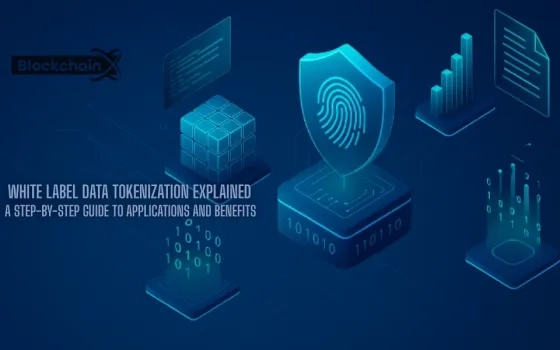Agile and DevOps have been the buzzwords in the software development industry for a while now. Smaller iterations, more collaboration, and frequent deployment have all been incorporated to push software out at a faster rate. However, there is a new trend that has hit the field recently: DevSecOps or Security Operations being built directly into the software delivery life-cycle.
DevSecOps integrates security requirements from beginning to end throughout product design, threat modeling, implementation, and ongoing monitoring into short iterations. In contrast to Agile’s focus on speed of iteration and high-velocity releases, DevSecOps focuses on integrating security early in development processes to reduce potential vulnerabilities from ever entering production environments.
What is Agile?
Agile’s strength lies in its ability to implement change quickly and efficiently. The keystone for this project methodology is short, iterative development cycles during which teams meet milestones by making small steps towards completing larger goals.
This can be done with secure DevSecOps or insecurely without integrating security throughout the entire software delivery life-cycle, where vulnerabilities are introduced and left undiscovered until it hits production. Because of the focus on speed and efficiency with agile methods, security often takes a backseat as an afterthought. Furthermore, because of rapid changes in requirements, Agile teams are unable to keep up with the rigor of following an exhaustive security development life-cycle.
What is DevSecOps?
DevSecOps emphasizes software security throughout the entire software delivery process while still delivering projects at a faster speed than traditional methods. The integration of security into agile methodologies allows developers to be more efficient with their time by building secure applications early on without sacrificing quality or timeliness. The keystone of DevSecOps is integrating security requirements from beginning to end throughout the product design, threat modeling, implementation, and ongoing monitoring.
The similarities between Agile and DevSecOps
Even though these methodologies employ approaches that may appear contrastive, there are a few similarities between them that are worth noting. To begin with, both methodologies aim for increased collaboration and team synergy.
The linear nature of traditional software development is broken up by the iterative nature of both methodologies, which enables teams to communicate with each other better. By breaking down large projects into small tasks, there is more work done in parallel, allowing developers to be more collaborative. Furthermore, code reviews are done regularly throughout agile and DevSecOps, which also increases communication between developers.
Differences between Agile and DevSecOps
While both have an emphasis on change, Agile focuses on being able to quickly adapt to ever-changing business needs, while DevSecOps has a focus on changing technology which includes web applications, IoT devices, mobile phones, etc. This means that agile is more broad and flexible in its approach, while DevSecOps has a narrower focus.
The main difference between the two methodologies is their level of security. Agile focuses on speed and efficiency, whereas to be truly secure, security needs to be incorporated throughout the entire software development process (not just at the end).
The longer an application exists in production with vulnerabilities within it, the higher the likelihood that malicious actors will exploit them. This inherent risk means there needs to be a greater emphasis on security when creating applications with DevSecOps than there does with Agile.
For example, one of the key components of DevSecOps guides developers to build security features incrementally by following best practices such as threat modeling and building security from the ground up. Furthermore, the industry standard for DevSecOps is to use automated security tools throughout the development process to catch potential vulnerabilities at different stages of production.
Pros and Cons of each process
Choosing which methodology is best for your project, it’s important to know the pros and cons of both. This way, you can see what works best for your project and apply the methodology that is better suited. Let’s compare the pros and cons of each process.
DevSecOps Pros
- Security is built into software development, reducing risk from every stage in the life cycle. This means that security features are built-in from the ground up before a project is even started.
- There is always an emphasis on keeping software secure throughout its life cycle. This means that security doesn’t only exist at the end of the development process, but it is implemented throughout each stage.
- Developers can learn and understand why they’re building secure code early on, resulting in better code quality. Because developers build security early on instead of as an afterthought, there is less room for error within their code because they know what they need to do to make it secure and how.
- DevSecOps enforces a more secure mindset throughout development teams, starting with communication and transparency between business operations and security teams throughout the entire product life-cycle. The end result is a stronger focus on identifying potential vulnerabilities early on.
- By incorporating security compliance requirements within shorter agile iterations, you’ve limited the opportunities to introduce critical vulnerabilities to your codebase. In other words, security issues get discovered earlier in your project timeline, mitigating any serious damage that could have been done if it made its way out into production while being overlooked by developers after several releases.
DevSecOps Cons
- Because of the focus on speed and velocity within Agile, security has often been an afterthought. DevSecOps forces developers to keep security top of mind throughout the entire process, which isn’t always a popular method amongst Agile purists.
- When businesses are increasing pressures to build software quickly, ensuring that DevSecOps is used correctly becomes challenging. To do it properly, you must incorporate collaboration between business operations personnel, information security officers, and developers. When done incorrectly, this could wind up creating confusion throughout the team resulting in failed compliance audits or dirty code being released into production.
- DevSecOps requires a commitment to security. It has the potential to introduce more time and effort into the development process, which could slow down the velocity and cause delays in your project timeline.
Agile Pros
- Agile is more flexible than DevSecOps, making it easier to adjust and prioritize as needed.
- Because it focuses on speed and security, agile development, security features such as threat modeling can be added as an afterthought within the sprint planning process depending on the team’s velocity.
- If you notice that certain security requirements such as peer code reviews aren’t completed, you can add them to the backlog and work on it later when there is more time.
Agile Cons
- Because Agile places less emphasis on security than DevSecOps, there is a greater risk that your code will be released into production with vulnerabilities that should have been caught before it was pushed out to production.
- With more emphasis on speed and velocity, DevSecOps doesn’t allow the time necessary to properly identify and prioritize security vulnerabilities that could wind up hurting your business.
Final thoughts
While both methods have their pros and cons, when it comes to security in agile development methodologies, DevSecOps seems to have a clear advantage over Agile for building secure software. Since security requirements are integrated into each iteration throughout the entire software delivery life-cycle, there isn’t a large emphasis placed on speed which leaves room for more thorough testing and verification processes. In contrast, Agile has proven to be more of a challenge with its emphasis on speed and efficiency that often leaves out vital security practices in the development process.
Source: Which Should you Choose – DevSecOps or Agile for Software Development?
















